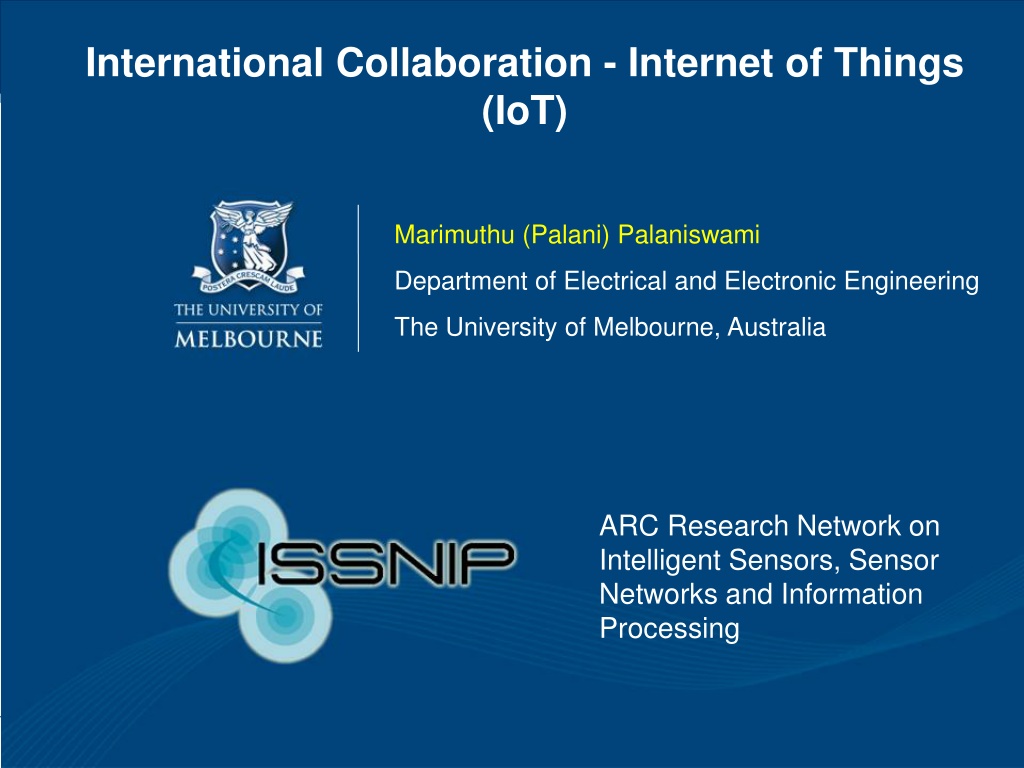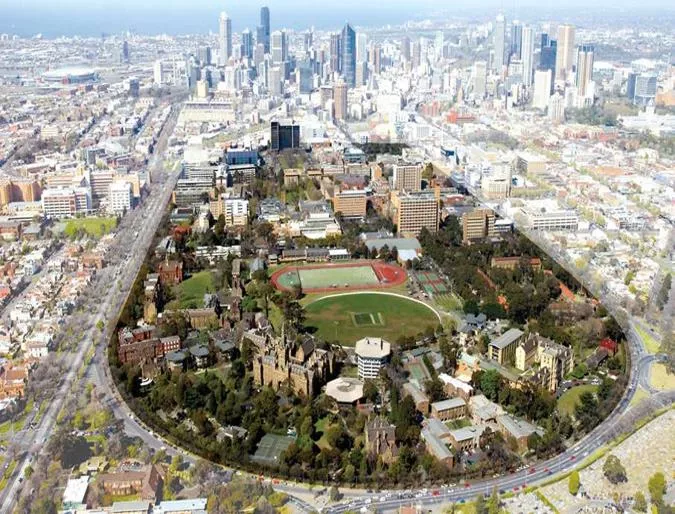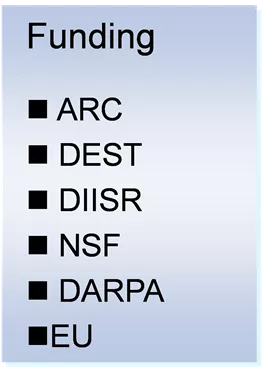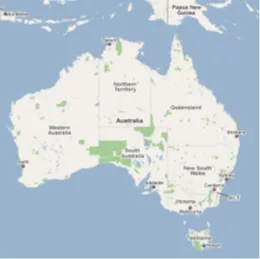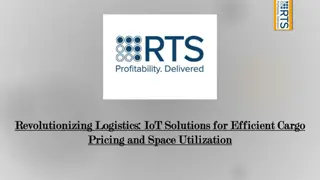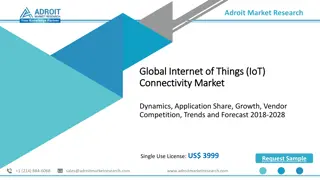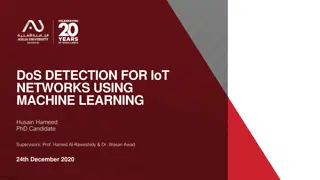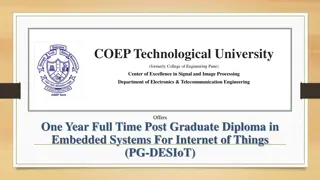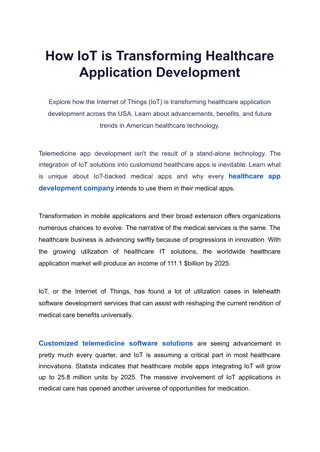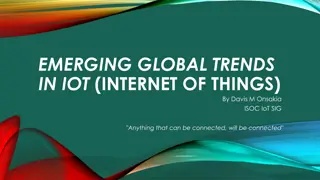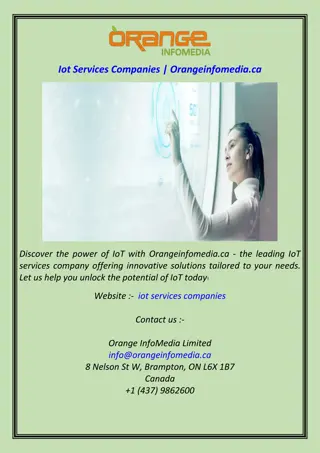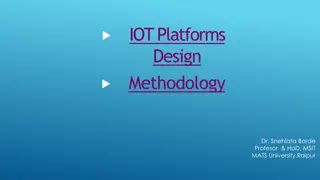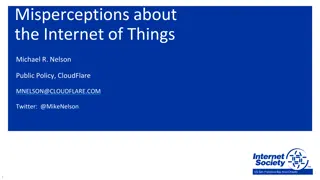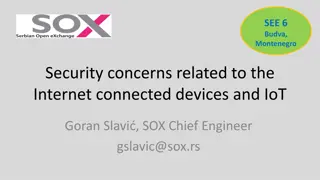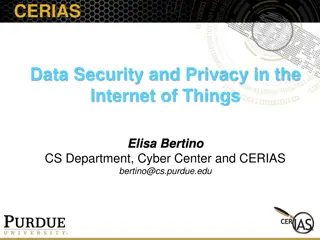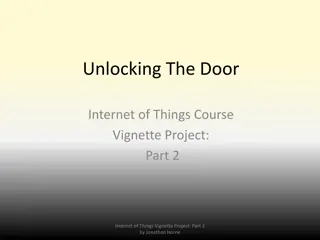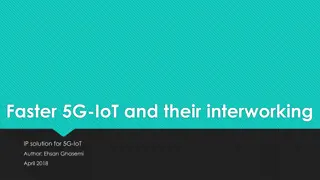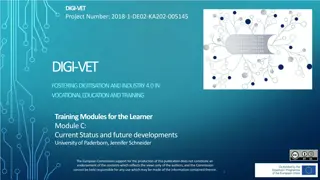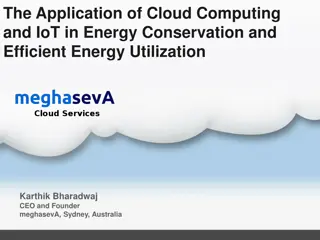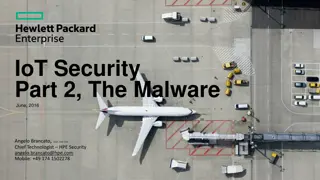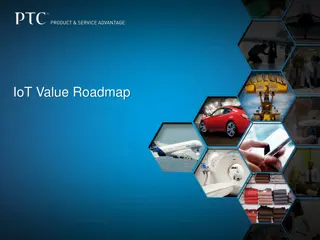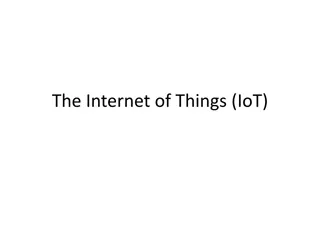International Collaboration on Internet of Things (IoT) Research
Research collaboration led by Marimuthu Palaniswami at the University of Melbourne focuses on IoT technology, intelligent sensors, and sensor networks. The project involves a large network of researchers and students across Australia, USA, Europe, and Asia, with strong industry partnerships and funding support. The initiative aims to advance IoT applications and infrastructure for smart cities, citizen engagement, environment management, and more.
Download Presentation

Please find below an Image/Link to download the presentation.
The content on the website is provided AS IS for your information and personal use only. It may not be sold, licensed, or shared on other websites without obtaining consent from the author. Download presentation by click this link. If you encounter any issues during the download, it is possible that the publisher has removed the file from their server.
E N D
Presentation Transcript
International Collaboration - Internet of Things (IoT) Marimuthu (Palani) Palaniswami Department of Electrical and Electronic Engineering The University of Melbourne, Australia ARC Research Network on Intelligent Sensors, Sensor Networks and Information Processing
ISSNIP ARC Research Network on Intelligent Sensors, Sensor Networks and Information Processing Melbourne Access to an extended network of over 200 researchers and post-graduate students, as well as extensive links throughout Australia, the USA, Europe and Asia 50 primary participants 50 affiliate researchers & post-docs 75 research students 10 Australian universities and partner organisations 30+ Industry linkages Nationwide sensor network research infrastructure (GBROOS, BigNet) ISSNIP Partners Funding cradle__technologies_logo compumedics Universities National International Industry Research Institutions ARC DEST DIISR NSF DARPA EU Intersystems logo microsoft-logo 135220032 Tanner Research official%2520raytheon%2520logo coastalWatchLogo tenix QPSF_logo logo_rolaChem 2
ISSNIP (2004 - 2011) International Outlook Member Organizations 26 Affiliated Organizations 83 Active Researchers 148 70 175 176 171 148 120 CIs 48 Affiliated Researchers 66 ECRs 38 Students 97 Funded ECRs and students 54 37 38 18 Publications Books/book Chapters 72 Journals 201 Conference papers 283 New grants 112 Events (conferences, workshops, meetings, etc) 240 3
ISSNIP - European Linkages 2010 2013 Citizen centric IoT Future Internet and IoT IoT Engagement Co-creating Smart Cities, Citizen Services Infrastructure for IoT 2007 2013 2015 (H2020) 4
Smart City - Fundamental Components Particulate Matter Particulate Matter City Environment Citizen Engagement Infrastructure System Transport Participatory Sensing Transport Participatory Sensing Community Health Ecosystem Environment Management Emergency & Disaster Management Environment Management Mobile Health Mobile Health Crowd Monitoring Crowd Monitoring End End 5
City Environment Particulate Matter (PM) PM10: < 10 micro meter PM2.5: < 2.5 micro meter PM1 : < 1 micro meter > 4.6 million people die annually from the direct impact of air pollution WHO Major cause of respiratory conditions Asthma, Bronchitis , chronic obstructive, pulmonary disease PM are small enough to penetrate the deepest portions of the lungs absorbed into the bloodstream In Australia 8.36% increase in cardiovascular related hospital admissions in Adelaide with a 10 g/m3 increase in PM2.5 4% increase in respiratory related emergency hospital admissions in Brisbane with an increase of 10 g/m3 in PM10 In six USA cities: 26% more likely to die prematurely than those exposed to lower PM concentrations Sources of PM : industrial processes, motor vehicles, mining, Domestic fuel burning , Diesel exhaust, bushfires, windblown dust and salt spray from oceans Images From : http://ciese.org/curriculum/airproj/pm_size/; http://igpenergy.com/IGP_PM2point5problem.htm 6
Smart City - Fundamental Components Particulate Matter Particulate Matter City Environment Citizen Engagement Infrastructure System Transport Participatory Sensing Transport Participatory Sensing Community Health Ecosystem Environment Management Emergency & Disaster Management Environment Management Mobile Health Mobile Health Crowd Monitoring Crowd Monitoring End End 7
Infrastructure System Transport Applications Fastest route Taxi Availability Parking availability Traffic route management Driver behaviour (anomaly) Road trajectory clustering Finding anomalies in traffic flow Suspicious activity detection Informing authorities about any anomalous activity Data (Beijing and Singapore) http://en.wikipedia.org/wiki/Right -_and_left-hand_traffic http://www.motoring.com.au/advice/2011/medium-4x4/tomtom- introduces-live-traffic-alerts-in-australia-26359 8
Smart City - Fundamental Components Particulate Matter Particulate Matter City Environment Citizen Engagement Infrastructure System Transport Participatory Sensing Transport Participatory Sensing Community Health Ecosystem Environment Management Emergency & Disaster Management Environment Management Mobile Health Mobile Health Crowd Monitoring Crowd Monitoring End End 9
Ecosystem Great Barrier Reef - Monitoring Tropical cyclone Hamish formed in the northern part of Australia and tracked through the main part of the reef Coming within 130 kilometres of the sensor network stations at Heron and One Tree Islands on the 9th of March 2009. Event Detection: Cyclone Hamish (March 2009) Detection 10
Smart City - Fundamental Components Particulate Matter Particulate Matter City Environment Citizen Engagement Infrastructure System Transport Participatory Sensing Transport Participatory Sensing Community Health Ecosystem Environment Management Emergency & Disaster Management Environment Management Mobile Health Mobile Health Crowd Monitoring Crowd Monitoring End End 11
Emergency - Crowd Monitoring at MCG Stadium Case Study: Crowd Monitoring Analytics at MCG 100,000 people Previously manual counting Analytics include: Count traffic in real-time Relationship between people traffic and area available Predict unforeseen scenarios Evacuation strategies in emergencies Understanding of people s behaviour and their movements Automated and robust crowd controlling mechanism (close/open gates) 350 IP Cameras Camera network Crowd Analytics Instances Counting Density Tracking Behaviour Industry Partners: Funding: ARC Linkage Grant (LP100200430) 12
Smart City - Fundamental Components Particulate Matter Particulate Matter City Environment Citizen Engagement Infrastructure System Transport Participatory Sensing Transport Participatory Sensing Community Health Ecosystem Environment Management Emergency & Disaster Management Environment Management Mobile Health Mobile Health Crowd Monitoring Crowd Monitoring End End 13
Community Health Mobile Health Community Internet Kiosk Mobile Health: Pneumonia Epilepsy Stroke Rehabilitation Aged care Cloud Analytics Medical Professional Mobile Funding and partners: 14 14
Smart City - Fundamental Components Particulate Matter Particulate Matter City Environment Citizen Engagement Infrastructure System Transport Participatory Sensing Transport Participatory Sensing Community Health Ecosystem Environment Management Emergency & Disaster Management Environment Management Mobile Health Mobile Health Crowd Monitoring Crowd Monitoring End End 15
Citizen Engagement Participatory Sensing Participatory Sensing: Individuals and communities use mobile phones and cloud services to collect and analyse data City of Melbourne Open data platform increase transparency, improve public services and support new economic and social initiatives. Pedestrian Counting 28 Sensor locations 24 x 7 Live data Innovation Internet of Things New Knowledge SMEs Development Privacy Policymaking Security Open Data: https://data.melbourne.vic.gov.au/ Live Data: https://data.melbourne.vic.gov.au/Community/Pedestrian-Counting-Sensor-Location-Map/9re6-j9ta S. Marusic, J. Gubbi, H. Sullivan, Y. W. Law, M. Palaniswami. Participatory Sensing, Privacy, and Trust Management for Interactive Local Government , IEEE Technology and Society Magazine, vol.33, no.3, pp.62,70, Fall 2014. 16
Smart City - Fundamental Components Particulate Matter Particulate Matter City Environment Citizen Engagement Infrastructure System Transport Participatory Sensing Transport Participatory Sensing Community Health Ecosystem Environment Management Emergency & Disaster Management Environment Management Mobile Health Mobile Health Crowd Monitoring Crowd Monitoring End End 17
Smart City, New Innovations Better Life J. Gubbi, R. Buyya, S. Marusic, M. Palaniswami, "Internet of Things (IoT): A vision, architectural elements, and future directions." Future Generation Computer Systems 29.7 (2013): 1645-1660. 18
